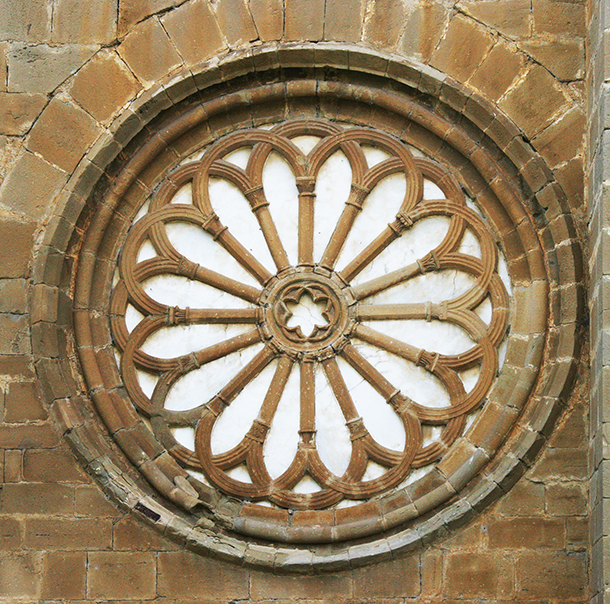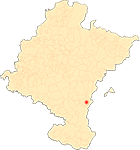The monastery of La Oliva
Introduction
The monastery of La Oliva is one of the most monumental and best preserved Cistercian monasteries on the Iberian Peninsula. We can visit a large late Romanesque church, a beautiful, radiant and flamboyant Gothic cloister, its very interesting group of outbuildings built around 1200 and the Baroque abbey palace. Its current appearance is the result of successive restoration campaigns promoted by Navarre's institutions. After it passed into private hands in the disentailment process of 1835, the monumental complex was abandoned until it was declared a National Monument fifty years later. A slow recovery then began, accompanied by the reintroduction of monastic life in 1927.
The introduction of the Cistercian Order in the kingdom of Navarre was quite early. According to some sources, by 1140 a monastic community was following the Cistercian rule in the area around Niencebas/Fitero (then Castile). Its vitality must have been extraordinary. Five years later it was officially integrated into the Order's organization chart , and had at least two farms: Veruela and La Oliva. Shortly afterwards, both acquired the status of independent monasteries.
From an artistic point of view, the visit a La Oliva has much to offer us. The abbey church, planned around 1164, was to be contemporary with other great buildings begun in the second half of the 12th century. conference Within a radius of two or three kilometres (between 50 and 75 km) stonemasons, masters and craftsmen of all kinds were trained and worked for generations in the workshops of the monastery of Fitero, Santa María de Tudela, the cathedral of Santo Domingo de la Calzada, San Pedro de Olite and the monastery of La Oliva itself. The art of stone and its construction was to acquire great brilliance. This fantastic rose window, the first of its kind to be made in the kingdom of Navarre, bears witness to all this. Its circular perfection and beautiful radial organisation will be a perfect compass to orientate our visit.












